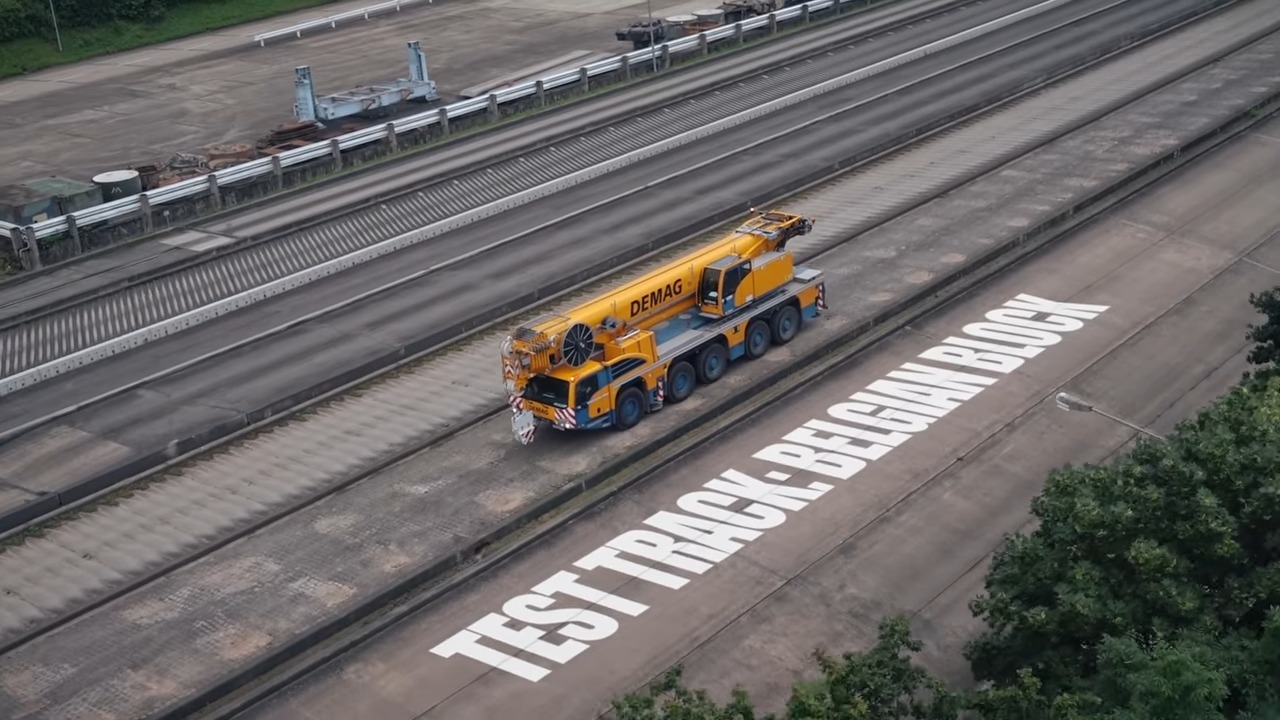Crawler Crane vs Rough Terrain Crane
Meta Description: Explore the differences between crawler and rough terrain cranes, from their designs and features to their suitability for various job sites. Learn how each crane type excels in different terrain conditions.
This guide compares crawlers and rough terrain cranes, two famous pieces of heavy lifting equipment. Both crane types are well-suited to construction sites but have different designs that impact their mobility, stability, and ideal applications.
The following sections will outline critical differences in these cranes’ configurations, capabilities, suitable job sites, and factors to consider when determining the right crane for any lifting project.
Key Takeaways
- Crawler cranes excel at lifting heavy loads and operating in rugged terrain thanks to their tracks, which provide excellent stability over uneven surfaces.
- Rough terrain cranes are well-suited for tight job sites and changing conditions due to their maneuverable tire-based mobility system.
- Factors like a project’s lift requirements, terrain challenges, and space constraints should influence rental decisions between these crane types for construction and heavy industry applications. Understanding each model’s strengths will ensure selecting the suitable equipment.
Crawler Crane Design and Features
Crawler cranes are designed to lift heavy loads and operate in rugged terrain. Their signature caterpillar tracks allow them to achieve excellent grip on unstable ground surfaces. The tracks are a vital component that provides crawler cranes with stability and the ability to traverse uneven terrain.
Track Configuration and Stability
With its railroad wheel-style tracks, the crawler crane’s track configuration gives it unparalleled stability when lifting loads or operating in rough terrain. The tracks combine the crane’s weight capacity over a large surface area, preventing the crane from sinking into soft ground.
This allows crawler cranes to achieve the same lifting capacity on unstable ground that other cranes require stable, level surfaces. The internal hydraulic system powering the tracks also gives crawler cranes more traction for lifting heavy objects or moving loads over rough terrain sites.
Cab and Control Systems
Crawler crane operators are positioned in an elevated cab that rotates 360 degrees, allowing for excellent visibility when lifting heavy loads.
The cab contains advanced control systems to operate the crane’s functions precisely. Hydraulic pumps and an internal hydraulic system power boom, fly jib, and track movements.
Crawler cranes commonly feature cab load moment and radius indicators to help operators work safely within the crane’s weight capacity and configure lifts for different job sites.
Lifting Capacities and Configurations
Crawler cranes are designed with the ability to lift heavier loads than other cranes and operate effectively in rugged terrain and uneven ground conditions.
Their lattice boom designs provide extra strength for lifting heavy objects and moving loads over rough terrain sites.
Operators can configure crawler cranes with different boom and jib lengths to meet the lifting and positioning needs of various construction sites and heavy lifting requirements.
Crawler cranes’ track mobility and stability allow them to achieve the same lifting capacity on unstable ground that mobile cranes require stable, level surfaces.

Rough Terrain Crane Design
Rough terrain cranes are well-suited for operating in off-road conditions and varied job sites. Their design prioritizes mobility and maneuverability over stability.
Tire-Based Mobility System
Rough terrain cranes have large rubber tires rather than tracks, giving them a tire-based mobility system. The tires provide excellent traction for traversing uneven terrain and surfaces, allowing rough terrain cranes to easily access tight spaces and navigate around obstacles on construction sites.
The tire configuration also helps these cranes handle changing weather conditions and environments well. Compared to crawler cranes, rough terrain cranes can more easily move between job sites over public roads when traveling.
Their tire design allows them to handle off-road hoisting operations that require hosting loads in rugged terrain.
Outrigger Leveling and Stabilization
Rough terrain cranes rely on outriggers and a hydraulic system to stabilize and level themselves for safe lifting. The outriggers are designed to extend from the crane’s chassis and deploy large pads that can distribute the crane’s weight capacity over a wide surface area.
This allows rough terrain cranes to achieve stability on uneven or sloped job sites that other cranes may not be able to access due to a lack of level ground. Hydraulic pumps then automatically level the crane’s base and keep it stable during lifting operations.
Boom and Jib Configurations
Like crawler cranes, rough terrain cranes can be configured with different boom and jib combinations to suit various lifting needs.
Operators can choose from extra-strength crane versions with lattice booms for heavy loads or traditional crane designs with truss booms well-suited to medium sites.
Telescoping boom extensions also allow these cranes to lift loads to greater heights. Jib attachments further widen the range of lifting configurations for positioning loads in tight spaces or over obstacles on construction sites.
Comparing Mobility and Terrain Suitability
One key difference between crawlers and rough terrain cranes is how they navigate various job sites and environments.
Tracks vs. Tires for Different Surfaces
Crawler cranes rely on their signature caterpillar tracks for mobility. The continuous band of tracks provides excellent grip, allowing them to traverse uneven terrain and unstable ground with more stability than tires.
Their tracks also allow them to lift heavier loads on soft surfaces where other cranes require more stable conditions. Conversely, rough terrain cranes have large rubber tires that offer superior maneuverability for navigating tight spaces and corners on construction sites.
Set-up processes
The set-up process for these cranes also differs based on their mobility system. Crawler cranes do not require outriggers for lifting stability since their tracks distribute weight evenly. They can pick and lift from their on-board position.
In contrast, rough terrain cranes rely on outriggers to extend pads and level themselves before operations, which takes more time and preparation on uneven job sites.